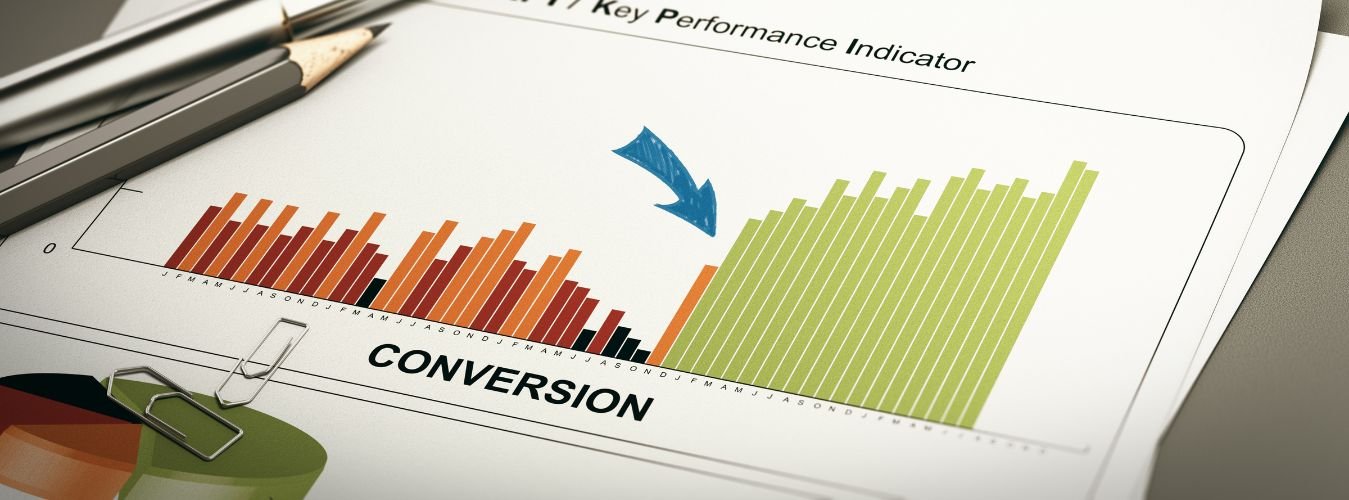The conversation happens on a Saturday morning.
Not at a bank. Not in a financing office. Just two neighbors, standing at the property line between their yards, coffee cups warming their hands against the February chill that Floridians call winter.
It’s a scene that plays out in Lake Nona, Windermere, and Dr. Phillips every weekend. One homeowner finally voicing what’s been on their mind for months: “We’re thinking about finally doing the pool.”
The other neighbor nods. And then comes the pause. The real question beneath the surface question.
“It’s just—the money thing.”
Because here’s what nobody talks about at neighborhood barbecues or school pickup lines: even families who have the money often wrestle with whether to actually spend it. Dropping seventy-five or eighty-five thousand dollars all at once feels significant, regardless of what your bank balance says.
What surprises many Orlando homeowners is learning that their neighbors with the stunning outdoor spaces—the ones with the tanning ledge and the fire bowls and the outdoor kitchen that makes every gathering migrate to their backyard—often financed those projects.
Not because they had to.
Because the math made sense.
The Financing Conversation Nobody's Having

There’s a peculiar silence around pool financing in premium markets. Visit most luxury pool builders’ websites and you’ll find financing mentioned in a footnote, like it’s something vaguely embarrassing—a consolation prize for people who can’t afford the “real” way to buy a pool.
It’s backward.
Industry data indicates that families with household incomes exceeding $200,000 frequently utilize financing for major home improvements, not from necessity but from strategic financial planning. These aren’t people stretching to afford something beyond their means. They’re people who understand that liquidity has value, that opportunity costs are real, and that the emotional benefit of enjoying your pool starting this summer instead of three summers from now has a price tag attached.
The typical Orlando luxury pool project ranges from $75,000 to $150,000. That’s not money that appears in most people’s checking accounts overnight, even for successful professionals. It’s money that accumulates slowly in investment accounts and retirement funds and college savings plans—money that’s already working, earning returns, building toward other goals.
Pulling it all out at once to fund a pool isn’t just financially uncomfortable. It’s often financially inefficient.
Understanding Your Financing Landscape

Pool financing in Orlando isn’t one thing. It’s a spectrum of options, each with its own mathematics, its own trade-offs, its own sweet spot of circumstances where it makes perfect sense.
Home equity loans represent the traditional approach. You’re borrowing against the value you’ve already built in your property, typically at interest rates considerably lower than unsecured lending products. For Orlando homeowners who’ve watched their property values climb steadily—and Lake Nona, Dr. Phillips, and Windermere have seen notable appreciation in recent years—this equity exists as a financial resource waiting to be deployed.
The structure is straightforward: fixed interest rate, fixed monthly payment, fixed term. You know exactly what you’re paying and when it will be paid off. There’s comfort in that predictability, especially for families who value financial clarity.
But home equity loans come with their own considerations. Closing costs. Processing time. The psychological weight of increasing your mortgage debt. For some families, these factors matter more than the favorable interest rate.
Home equity lines of credit offer more flexibility. Instead of receiving a lump sum, you’re approved for a credit line you can draw against as needed. This matters for pool projects because construction happens in phases, and you’re only paying interest on the money you’ve actually borrowed at any given time.
Market data suggests that HELOCs can provide strategic advantages for homeowners managing multiple financial priorities simultaneously. You might draw $40,000 for the initial construction, watch your home value increase as the project takes shape, then access additional funds for the finishing touches without going through another approval process.
Personal loans solve a different problem. No home equity required. No appraisal. No closing costs. Approval can happen in days instead of weeks, and funded loans can provide cash within 48 hours.
The trade-off appears in the interest rate, which typically runs higher than secured lending. But for families who need to move quickly—perhaps to take advantage of an off-season discount or to complete the project before a major family event—the speed may justify the additional cost.
Pool-specific financing programs through manufacturers and builders occupy interesting middle ground. These products are designed specifically for the pool industry, which means the lenders understand the product, the timeline, and the value proposition in ways that general-purpose lenders sometimes don’t.
Promotional rates exist in this space. Zero percent financing for twelve or eighteen months. Deferred interest programs that can work brilliantly if you have the discipline to pay off the balance before the promotional period ends—and can work terribly if you don’t.
The Mathematics of Smart Financing

Let’s put numbers to a real scenario. Because abstract financial advice dissolves in the
presence of actual dollars.
Consider an $85,000 pool project in Windermere. Imagine you have the money in investments, currently earning an average annual return of 7%. You’re evaluating whether to liquidate those investments or finance the project.
A home equity loan at 6.5% over ten years means monthly payments of approximately $965. Total interest paid over the life of the loan: roughly $30,800.
That sounds expensive until you run the comparison. If your investments continue earning 7% annually while you’re paying 6.5% on the loan, you’re maintaining a positive spread. Your money is working harder staying invested than it would be converted to pool construction.
The difference becomes more pronounced with shorter loan terms. An $85,000 loan at 6.5% over five years carries monthly payments of approximately $1,665, but total interest paid drops to around $14,900. Your payoff happens faster, and the opportunity cost of pulling money from investments decreases proportionally.
These calculations shift based on your specific financial situation. If your emergency fund would be depleted by paying cash, the value of maintaining liquidity might outweigh any interest rate considerations. If you’re in your peak earning years with high confidence in your income stability, aggressive payoff strategies might make more sense than extended terms.
Recent economic trends show that interest rate environments change, sometimes dramatically and sometimes quickly. Homeowners who locked in favorable rates during previous years often find themselves with borrowing costs below their investment returns—a scenario where carrying the debt actually enhances their financial position.
The Credit Conversation

Here’s what the financing companies don’t advertise prominently: your credit score determines not just whether you get approved, but what your approval actually costs you.
The spread between excellent credit and good credit can represent thousands of dollars over the life of a pool loan. A borrower with a 780 credit score might qualify for 5.9% while someone with a 680 score sees 8.5%. On an $85,000 loan over seven years, that difference translates to roughly $200 per month and $17,000 in total interest paid.
Understanding this before you start the financing process matters. If your credit score sits just below a rate threshold, waiting a few months while you improve your score can save more money than rushing into the loan immediately.
Credit score improvement isn’t mysterious. It’s mechanical. Pay down credit card balances below 30% utilization. Don’t open new credit accounts in the months before applying for the pool loan. Dispute any errors on your credit report. These actions won’t transform a 620 score into an 800, but they can shift a 710 into a 740, and that shift has real economic value.
For families planning their pool project a year in advance, this timeline provides opportunity. You can strategically strengthen your credit position before you need it, ensuring that when you’re ready to move forward, you’re accessing the most favorable terms available.
The Consultation That Changes Everything

The most expensive financing mistake isn’t choosing the wrong loan product. It’s making the decision in isolation, without understanding how all your options stack against each other with your specific numbers plugged in.
This is where the conversation with a financial professional who understands luxury home improvements becomes valuable. Not a pool salesman explaining financing as an afterthought. Not a generic loan officer who processes your application without context. Someone who can map your full financial picture and show you what different strategies actually cost in your situation.
These consultations reveal things that aren’t obvious. Maybe financing half the project while paying cash for the rest optimizes your tax situation. Maybe a shorter loan term with higher payments actually frees up more of your monthly budget in year three when your oldest starts college. Maybe your home equity is better deployed elsewhere and a personal loan, despite the higher rate, leaves you in a stronger overall position.
The families who finance their pools most successfully treat it as a strategic decision, not just a transaction. They compare actual offers, not advertised rates. They understand what prepayment penalties mean and whether they’ll want that flexibility. They know the difference between APR and interest rate and why that distinction matters.
What Strategic Financing Actually Looks Like
Picture the approach that sophisticated homeowners take to major investments. They’re not asking “Can we afford this?” They’re asking “What’s the smartest way to structure this?”
The homeowner who uses a home equity line to draw funds in phases as construction progresses—paying interest only on what’s been deployed, keeping the rest of their savings invested and working. They’re not paying interest on the full project cost while the pool builder is still excavating.
The family that compares their current investment returns against potential borrowing costs and realizes they’re better off financing at 6% while their portfolio averages 9%—that mathematical advantage compounds over years.
The couple who keeps their emergency fund intact by financing their pool instead of depleting savings—maintaining financial flexibility that gives them security and options when unexpected opportunities or challenges arise.
These aren’t theoretical approaches. They’re how financially sophisticated families actually think about major home improvements. The question isn’t “Should we go into debt?” The question is “What deployment of capital creates the best outcome across all our financial priorities?”
The Questions That Deserve Answers
Before you select a financing option for your Orlando pool project, these questions deserve
serious thought:
How quickly do you need access to the funds? Home equity products often require 3-4 weeks for approval and funding. Personal loans can close in days. If your timeline is compressed, your options narrow.
What’s your current liquidity situation? If financing the pool means maintaining a healthy emergency fund while cash payment depletes your reserves, that financial cushion has value beyond its balance sheet number.
How stable is your income? Dual-income households with both partners in stable careers can take on larger payments with less risk than single-income families or those with variable compensation.
What other major expenses are you planning in the next five years? If you’re financing the pool now but expect to need another major loan for a business expansion or property purchase, understanding how the pool loan affects your overall debt-to-income ratio matters.
What’s your investment return expectation? If you’re consistently earning 10% in the market and can borrow at 6%, the mathematics favor financing. If your money is sitting in savings accounts earning 0.5%, paying cash eliminates the interest expense entirely.
The Timeline You're Not Expecting
Here’s what the financing process actually looks like when you decide to move forward:
Week one: Initial consultation and application. You’re gathering documentation—pay stubs, tax returns, bank statements—and submitting your formal application. Most lenders now handle this digitally, which speeds the process considerably.
Week two to three: Underwriting and appraisal. If you’re doing a home equity product, the lender orders an appraisal to determine your home’s current value. Your credit is reviewed in detail. The underwriter evaluates whether your income supports the additional debt.
Week three to four: Approval and closing. You receive your final approval, review your loan documents, and close on the financing. Funds become available, and you’re ready to start construction.
This timeline assumes normal circumstances. Complications can extend it. An appraisal that comes in lower than expected might require additional documentation or reduce your available equity. Employment verification that takes longer than anticipated can delay underwriting.
Planning ahead means accounting for these potential delays. If you want to start construction in March, you’re submitting applications in January. If you need to complete the project before a major event in June, you’re having financing conversations in March at the latest.
The Partner That Makes It Seamless
Working with a pool builder who understands financing as part of the customer experience changes the process fundamentally.
At Aqua Elite Pools™, we’ve structured relationships with lending partners who specialize in luxury home improvement projects. They understand the value proposition of premium pool construction. They’ve seen the completed projects and the appraised value increases that follow. They know that financing an outdoor living transformation in Lake Nona or Windermere
isn’t the same as financing a jet ski or an above-ground pool.
This specialized knowledge translates into better terms, faster processing, and approval rates that exceed what you’d find approaching a general lender cold.
But more than that, we can help you understand the financing landscape before you commit to anything. We’ve worked with hundreds of families through this decision. We know which situations favor which products. We can introduce you to financial professionals who’ll give you objective analysis specific to your circumstances.
Because here’s what we’ve learned after years in this market: the families who are happiest with their pools aren’t necessarily the ones who paid cash or the ones who financed. They’re the ones who made an informed choice aligned with their broader financial strategy.
The Insight That Changes the Decision
There’s a moment in many financing consultations where you can see understanding shift in a homeowner’s eyes.
It’s when they realize that keeping $85,000 invested while financing their pool at 6% isn’t “going into debt.” It’s maintaining capital efficiency. Their investments continue compounding at historical market returns while they’re paying a relatively modest cost to borrow.
Or when they calculate that their monthly pool payment will actually be less than what they’ve been spending on weekend entertainment because their home wasn’t a destination worth staying in.
Or when they understand that financing half the project while paying cash for the other half gives them the liquidity to pursue another opportunity that emerges six months from now—one they’d have missed if all their reserves were converted to concrete and tile.
These aren’t justifications for unnecessary debt. They’re strategic insights about how money actually works when you stop thinking about it emotionally and start thinking about it mathematically.
The wealthy don’t avoid debt. They avoid expensive debt. They avoid poorly structured debt. They avoid debt that doesn’t serve a strategic purpose. But debt that’s cheaper than their opportunity cost? Debt that maintains flexibility? Debt that lets them enjoy their investment years sooner while their kids are still young enough to create those memories?
That debt makes sense.
Your Next Step
You’re reading this because you’re seriously considering a pool project in Orlando. The question isn’t whether you can afford it—if you’ve gotten this far, the answer is probably yes. The question is how to structure the financing in a way that makes sense for your specific situation.
That conversation doesn’t start with an application. It starts with information.
Contact Aqua Elite Pools™ for a complimentary financing consultation. We’ll review your project scope, discuss your financial priorities, and connect you with lending partners who can provide actual quotes based on actual numbers. No pressure. No obligation. Just clarity about what your options look like in reality instead of theory.
Because your dream backyard shouldn’t wait for someday when the mathematics say it makes sense today.
About the Author: With over 15 years of engineering excellence and more than $60M in successfully managed construction projects — from luxury high-rise towers to award-winning commercial developments — Henri founded Aqua Elite Pools™ on a principle learned through decades of high-stakes builds: luxury execution requires engineering discipline. At Aqua Elite, every promise is backed by precision project management and structural integrity, because your family’s investment deserves both beauty and reliability that lasts for generations.
